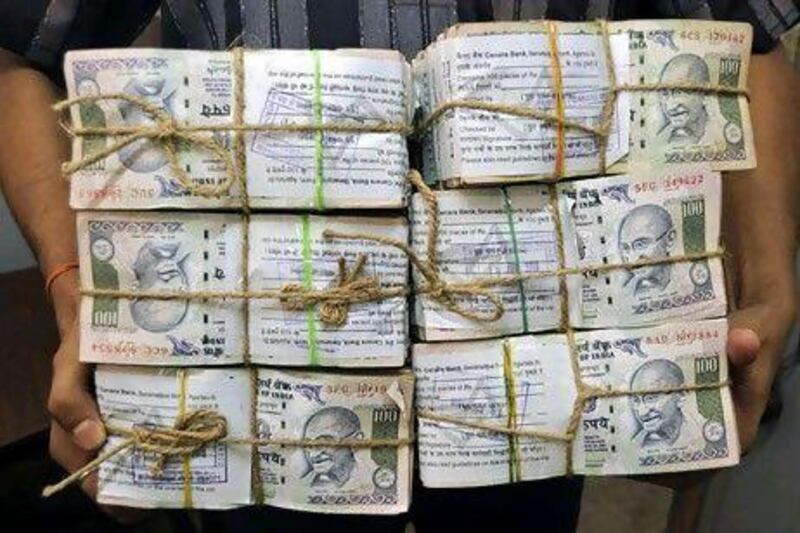In an ambitious effort to promote financial inclusion in a nation where only three in 10 people have access to formal banking, the Indian government is gearing up to unveil draft rules to issue licences to private-sector companies that would enable them to set up banks in India.
Large corporations, including Tata, Mahindra, Bajaj and the Ambani group led by the billionaire tycoon Anil Dhirubhai Ambani, are hankering after these licences, eager to penetrate India's tightly regulated but highly profitable banking sector.
It is poised to become the world's third-largest in terms of assets over the next 14 years, according to the Boston Consultancy Group. Assets of the domestic banking industry are poised to touch US$28.5 trillion (Dh104.68tn) by 2025, from $1.35tn last year.
India has 26 state-run banks, 22 private lenders and 32 foreign banks, but it remains a vastly underpenetrated market compared with most developed economies, providing scope for explosive growth.
The management consultancy McKinsey says there are only 10.11 bank branches per 1,000 adultsand barely one-third of India's 1.2 billion people have bank accounts. Of India's 600,000 villages, only 30,000 have access to bank branches.
As rural incomes expand, there is a greater demand for banking services. According to the market research company India Brand Equity Foundation, the country's working population is expected to increase from 675.9 million to 795.5 million by 2026, expanding the market for banks.
The government expects that large corporations will bring with them business and managerial competence to raise capital, which could further boost the sector.
But the decision to allow private corporations to own banks is fraught with risks, observers warn.
Duvvuri Subbarao, the chief of the Reserve Bank of India, this week warned that the government needed to plug several policy "gaps" before the draft rules were finalised.
The biggest concern is that corporations could use banks as private cash pools for "self-funding", a pernicious practice that may be hard to detect, as lending to promoters or group companies could be disguised by complex company laws.
But corporations say India's Banking Regulation Act, a 1949 legislation that regulates the sector, has inbuilt statutory checks to curb self-funding.
The act prohibits banks from lending to directors on the board of a bank or to relatives of directors without the prior approval of the board.
But Mr Subbarao warns of a loophole in the law.
"If a businessman has an interest in a bank as a promoter or a shareholder but has no position on the board, then there is no prohibition on the bank lending to the businessman," he said. "This opens up opportunities for self-dealing. As we contemplate allowing corporates to promote banks, there is need for changes in statutes and regulations to address such concerns."
But he declined to say when the licences would finally be issued.
Many analysts are critical of the government policymakers for heavy banking regulations that restrict growth.
But the government says its cautious and calibrated approach kept the sector largely insulated from the global economic crisis in 2008, when many banks in US and Europe went bankrupt.
While their western counterparts tightened monetary policy, India's banks were lending, functioning as a significant driver of GDP growth and employment during the crisis.
"The banks in India not just survived the crisis, but also grew at an excellent rate," Palaniappan Chidambaram, the finance minister during the crisis, said last year.
Twenty Indian banks with a total brand value of $13 billion were listed on last year's Global Banking 500, the annual international ranking of the world's most valuable brands by the UK consultancy Brand Finance.
The government-owned State Bank of India, the country's largest bank - whose brand value increased from $1.5bn in 2009 to $4.55bn last year - was ranked 36 and became the first Indian lender to be ranked among the top 50 banks in the world.
In a report released this month, Fitch Ratings said Indian banks, which have higher capital and improved loan-loss reserves, are better equipped now than 2008 to weather a global economic slowdown amid renewed concerns of a double-dip recession.





